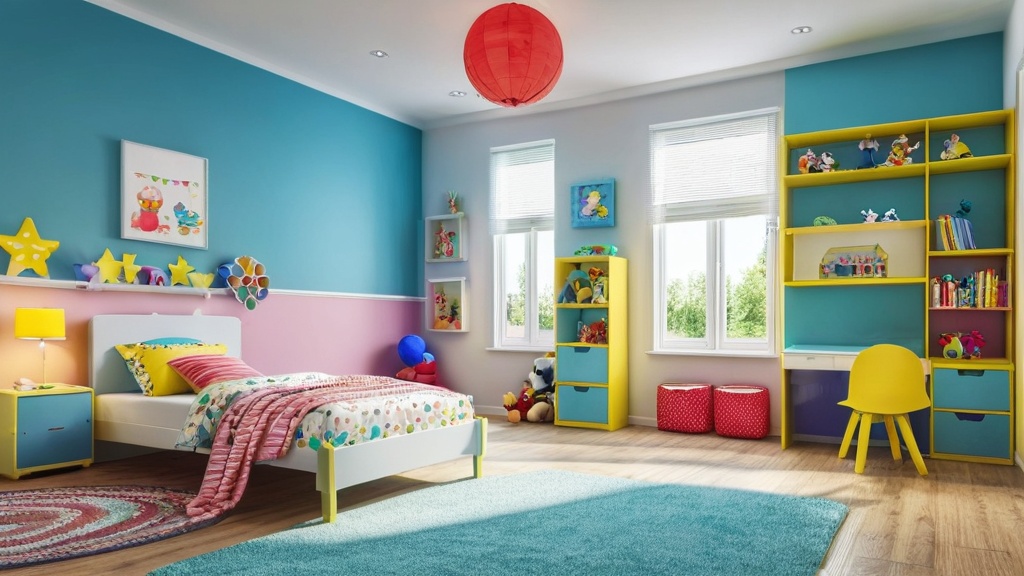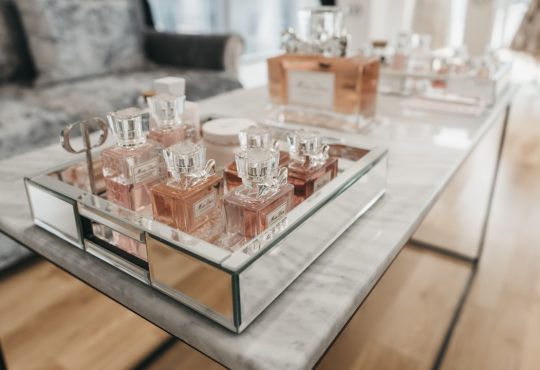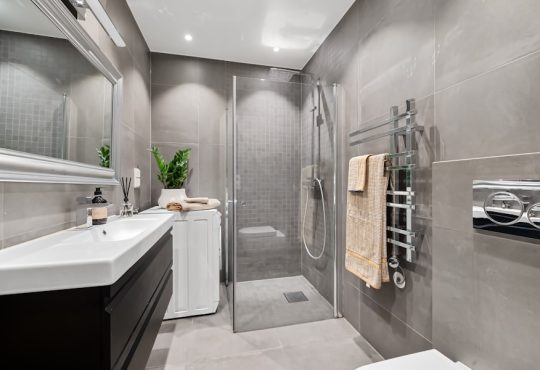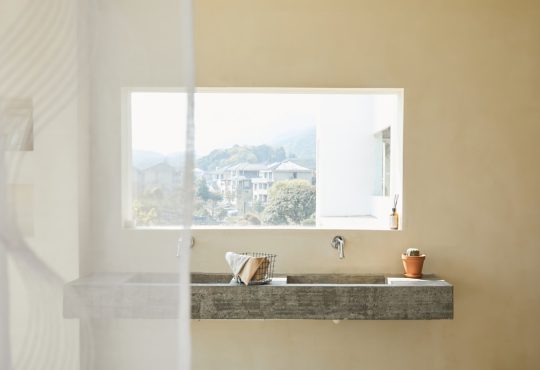
Decorating a children’s room with fabrics gives the space a flexible design
A child’s room is a unique space within a home. It is not a static museum of design but a living, breathing environment that must adapt at a pace unmatched by any other room. It serves as a bedroom, a playroom, a classroom, a fortress of solitude, and a stage for imagination. As your child grows, their needs, tastes, and interests can shift as quickly as the seasons. One year, the room is a prehistoric jungle filled with dinosaurs; the next, it’s the command centre for a mission to Mars. This constant evolution presents a significant challenge for interior design. Committing to a specific theme with paint, wallpaper, or expensive, character-themed furniture can quickly become outdated, leading to costly and time-consuming redecorations.
This is where fabric becomes your greatest asset. Think of fabric not just as an accessory, but as a foundational element of your design strategy. It is the chameleon of the decorating world, capable of changing its colours and patterns to suit any environment. By prioritising textiles—from curtains and rugs to bedding and wall hangings—you are creating a room with a flexible skeleton. This approach allows the space to grow and change alongside your child, requiring minimal effort and investment to feel entirely new. It provides a soft, tactile, and forgiving canvas that can be easily layered, swapped, and updated, ensuring the room remains a perfect reflection of the child who inhabits it at every stage of their development.
Before diving into specific applications, it is important to understand the core philosophy behind using fabric as a primary decorating tool. The traditional approach often focuses on permanent fixtures, treating textiles as an afterthought. Reversing this priority is the key to creating a truly adaptable room for your child.
The Challenge of Permanent Decor
When you decide to paint a mural of a favourite cartoon character on the wall or invest in a race-car bed, you are making a significant commitment. These elements are wonderful in the moment, but they have a short lifespan in terms of a child’s interest. Removing themed wallpaper can be a laborious task, and repainting a room requires time, effort, and disruption. Large, themed furniture is not only expensive but also difficult to repurpose once the phase has passed. This approach locks you into a specific look, making it difficult to pivot when your child’s world inevitably changes. It can create a sense of wastefulness when a perfectly good, but now disliked, piece of decor must be replaced.
Fabric as a Soft Foundation
Fabric, by contrast, is inherently temporary and non-committal in the best possible way. A duvet cover is easier to change than a wall colour. A rug is simpler to roll up and replace than flooring. A fabric wall hanging can be taken down in minutes, leaving no trace behind. This quality makes fabric the perfect medium for expressing a child’s current passions without making a long-term investment. Furthermore, textiles add a layer of softness, warmth, and comfort that is essential in a child’s environment. They absorb sound, making the room quieter and more peaceful. They offer varied textures for sensory exploration, from a rough linen basket to a plush velvet cushion. By building the room’s personality around these movable, changeable elements, you retain a neutral and timeless backdrop that can serve your child for years to come.
Beyond Paint and Wallpaper: Dressing the Walls and Windows
The walls and windows are often the largest surfaces in a room and have the most significant visual impact. While paint is a necessary base, you can use fabrics to introduce colour, pattern, and theme in a way that is far more flexible and dynamic.
The Versatility of Curtains and Blinds
Curtains are much more than just a way to block out light. They are like giant, customisable canvases that frame your window. For a young child, you might choose curtains with a playful animal print or a pattern of bright, primary-coloured shapes. As they grow older and develop an interest in astronomy, these can be effortlessly swapped for a set of dark blue curtains dotted with stars. For a teenager, a more sophisticated look with a solid colour in a rich texture like linen or velvet can instantly mature the space.
Beyond aesthetics, you can layer fabrics to enhance functionality. A combination of a sheer inner curtain and a heavier, blackout outer curtain gives you complete control over the light in the room. The sheer layer provides privacy and diffuses harsh sunlight during the day, creating a soft glow for playtime, while the blackout curtain ensures a dark, sleep-conducive environment at night. This layering also offers an opportunity to play with colour and texture, adding depth and interest to the room’s design.
Creating Fabric Wall Hangings
Instead of committing to a single-themed wallpaper, consider using large fabric panels as art. This is an incredibly effective and affordable way to make a bold statement. You can purchase a few metres of fabric featuring a design your child loves—be it a map of the world, a botanical print, or a graphic pattern—and create a simple wall hanging. By sewing a channel at the top and bottom and inserting a thin wooden dowel, you can hang it like a scroll. Alternatively, you can stretch the fabric over a large, lightweight wooden frame to create a piece that rivals a large-scale painting.
The beauty of this method is its impermanence. When your child outgrows the design, you can simply take it down, and the wall behind it is untouched. You can even create a rotating gallery, changing the fabric hanging with the seasons or as your child’s interests evolve. This approach allows the walls to be a dynamic part of the room’s story, rather than a static backdrop.
Canopies and Tents: A Room Within a Room
Fabric can be used to sculpt the space itself, creating intimate, magical zones within the larger room. A simple fabric canopy draped over a bed or a reading corner can instantly create a sense of enclosure and wonder. It transforms a simple bed into a princess’s pavilion, a jungle hideout, or a dreamy, cloud-like sanctuary. These canopies are widely available or can be easily made with a sheer, lightweight fabric and an embroidery hoop.
Similarly, an indoor tent or teepee made of canvas or cotton serves as a private haven for a child. It’s a designated space for quiet reading, imaginative play, or simply a place to retreat. These structures are defined entirely by fabric and are completely portable. They help to break up the open space of a room, providing a flexible way to create different functional zones without building permanent walls or dividers.
Softening the Landscape: Fabrics for Floors and Furniture

The floor is the primary play surface in a child’s room, and the furniture must be both durable and comfortable. Fabrics play a crucial role in making these elements adaptable, safe, and cosy.
The Role of Rugs in Defining Zones
A rug is one of the most powerful tools for a flexible room design. It acts as an anchor for a specific area, visually separating it from the rest of the space. You can use a soft, high-pile rug to define a cosy reading nook, placing a beanbag and a small bookshelf on it. A low-pile, durable rug with a road map or city grid printed on it can designate the main play area for toy cars and building blocks.
Like curtains and wall hangings, rugs are easily replaceable. A brightly coloured, playful rug can set the tone for a young child’s room. As they transition into their school-age years, you might replace it with a more subtle geometric pattern or a single-colour shag rug that feels more grown-up. A new rug can single-handedly change the entire atmosphere of the room, shifting its colour palette and overall feel with one simple action. It also adds a vital layer of warmth and cushioning, making floor time more comfortable and safer for tumbles.
Transforming Furniture with Slipcovers and Throws
Children’s furniture needs to withstand a lot of wear and tear. Stains and spills are inevitable. Instead of investing in expensive upholstered pieces that are difficult to clean, opt for simple, sturdy furniture that can be transformed with fabric. A basic armchair or a small sofa can be given a new lease on life with a custom-made or store-bought slipcover. This allows you to introduce any colour or pattern you wish, and most importantly, the cover can be removed and thrown in the washing machine.
This strategy extends the life of your furniture significantly. A neutral-coloured armchair can be dressed in a cheerful, patterned slipcover for a toddler, then a solid, durable denim cover for an older child, and finally a sophisticated linen cover for a teenager. The underlying piece of furniture remains the same, saving you money and reducing waste. Throws and blankets serve a similar purpose on a smaller scale, instantly adding a splash of colour or a cosy texture to a bed or chair.
Cushions and Beanbags: Movable Comfort
Cushions, floor pillows, and beanbags are the ultimate form of flexible, fabric-based furnishings. They are lightweight, movable, and can serve multiple purposes. A pile of large floor cushions can be arranged for a group of friends, stacked to create a fort, or used as soft landing pads. A beanbag chair is a classic piece of children’s furniture for a reason: it’s comfortable, fun, and can be easily moved to any corner of the room.
These items are defined by their fabric coverings, making them another easy way to inject a theme or colour scheme. You can find cushion covers in every imaginable design, from superhero logos to delicate floral prints. By simply changing the covers, you can refresh the room’s accent colours and motifs without buying new items. They are the small, decorative building blocks that add personality and comfort in a low-commitment, high-impact way.
Flexible Storage Solutions Woven from Fabric
| Product | Material | Size | Color | Price |
|---|---|---|---|---|
| Storage Basket | Fabric | 12″x12″x12″ | Gray | 15.99 |
| Laundry Hamper | Canvas | 18″x18″x24″ | Beige | 29.99 |
| Underbed Storage Bag | Polyester | 40″x18″x6″ | Navy Blue | 19.99 |
Clutter is the constant companion of childhood. Effective storage is essential, but rigid, heavy storage units are not always the best solution. Fabric-based storage offers a softer, more adaptable, and often more space-efficient alternative.
Fabric Bins and Baskets
Woven baskets and collapsible fabric bins are perfect for storing toys, dress-up clothes, and art supplies. Unlike hard plastic or wooden boxes, they are gentle on floors and won’t pinch little fingers. They come in a vast array of colours, sizes, and patterns, allowing them to be a decorative element in their own right. You can line open shelves with a series of matching bins to create a clean, organised look, or use a large, colourful basket as a central repository for stuffed animals. Because many are designed to be collapsible, they can be easily stored away when not in use.
Hanging Organizers for Walls and Doors
To maximise floor space, you can use fabric to harness the power of vertical storage. Hanging organisers with multiple pockets, often made of canvas or felt, can be hung on the back of a door or on a wall. These are ideal for storing small items that can easily get lost, such as small toys, art supplies, hair accessories, or socks. They keep items visible and within a child’s reach, encouraging them to tidy up after themselves. Again, these come in many styles and can be chosen to complement the room’s current decorative theme.
Concealing Clutter with Fabric Skirts
Some of the best storage spots in a room are often the most unsightly, such as the space under a bed or a simple work table. A fabric skirt is a simple and elegant solution to hide this clutter. By attaching a panel of fabric along the edge of a bed frame or tabletop, you create a hidden storage area. This can be done using hook-and-loop tape for easy removal and washing, or with a simple tension rod placed between the legs of a table. This technique not only hides messes but also adds another layer of soft texture and colour to the room.
A Design That Grows with Your Child
The ultimate test of a room’s design is its ability to stand the test of time. A fabric-forward approach ensures the space can be thoughtfully and easily updated to reflect your child’s journey from infancy to their teenage years.
From Nursery Pastels to Toddler Brights
When designing a nursery, the focus is often on soft, calming colours and gentle textures. You might choose pale yellow curtains, a cream-coloured rug, and bedding with a subtle animal motif. As your baby grows into an active toddler, their world becomes one of discovery and bright colours. The transition is simple. The neutral walls and furniture stay, but you can swap the pale curtains for a set in a vibrant primary colour, replace the cream rug with one featuring bold stripes, and introduce a duvet cover with large, graphic shapes. The entire feel of the room is transformed in a single afternoon.
Accommodating Shifting Interests and Hobbies
The school-age years are marked by intense, often short-lived, passions. A fabric-based design allows you to indulge these interests without a major overhaul. If your child becomes obsessed with horses, you can introduce bedding with an equestrian print, a few cushions shaped like horseshoes, and a large fabric wall hanging depicting a galloping herd. When that passion shifts to ballet a year later, the horse-themed textiles can be stored away and replaced with a pale pink throw, curtains made of a tulle-like material, and a rug that makes the floor feel like a stage. The core elements of the room remain unchanged, but the personality of the space is completely renewed.
The Teenager’s Retreat: A Simple Fabric Refresh
As children enter their teenage years, their room becomes a sanctuary and a space for self-expression. They will likely want to shed any remnants of childhood decor. This can be a moment for a major battle or a simple, collaborative update. With a fabric-based design, the transition is painless. The cartoon-character duvet cover can be replaced with a sophisticated linen or textured cotton one. The playful rug can be swapped for a monochrome geometric design or a faux-fur rug. New cushion covers in moodier tones or with band logos can be added to the bed. This empowers your teenager to take ownership of their space and express their identity, all without the need for a full redecoration. The room matures with them, proving the enduring power of a flexible, fabric-focused design.
Decorating a children’s room with fabrics offers a versatile approach to design, allowing for easy updates and personalization as the child grows. A related article that delves deeper into the art of textile selection and its impact on interior design is “Unveiling the Art of Textile Selection: Elevating Your Interior Design with the Right Fabrics“. This article provides insights into choosing the right fabrics to enhance any space, making it a valuable resource for those looking to create a dynamic and adaptable environment in a child’s room.
FAQs

What are the benefits of decorating a children’s room with fabrics?
Decorating a children’s room with fabrics can provide a flexible design that can easily be changed as the child grows. Fabrics can also add warmth, texture, and color to the room, creating a cozy and inviting space for the child.
What types of fabrics can be used to decorate a children’s room?
A variety of fabrics can be used to decorate a children’s room, including curtains, drapes, bedding, rugs, and upholstery fabrics for furniture. It’s important to choose fabrics that are durable, easy to clean, and safe for children.
How can fabrics be used to create a flexible design in a children’s room?
Fabrics can be used to create a flexible design in a children’s room by incorporating removable and interchangeable elements such as throw pillows, blankets, and curtains. This allows for easy updates and changes to the room’s decor as the child’s tastes and preferences evolve.
What are some tips for decorating a children’s room with fabrics?
When decorating a children’s room with fabrics, it’s important to consider the child’s age, interests, and any safety concerns. Choose fabrics that are easy to clean and maintain, and opt for colors and patterns that can easily transition as the child grows. Additionally, consider using blackout curtains to promote better sleep for the child.



